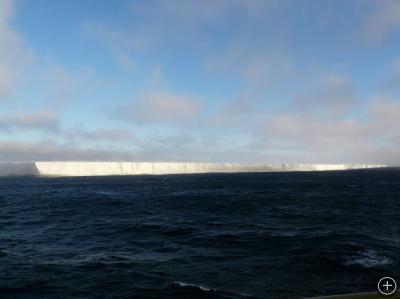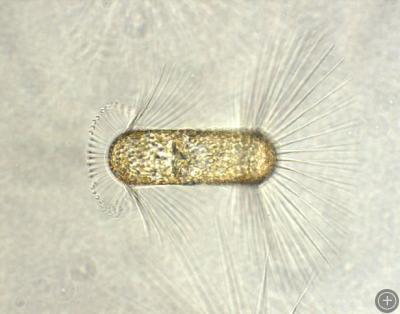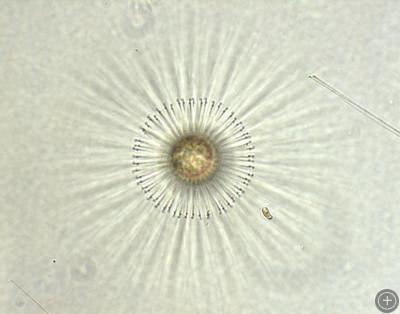Our First Iceberg
March 11th, 2009
ABOARD THE RVIB N. B. PALMER, ON THE SOUTHERN OCEAN– C18A is a large iceberg, rectangular, shaped almost like a surf board, 18 km long and 6 km wide. It takes us about 4 hours at 11 knots to navigate around it. Working around the iceberg will keep us busy for the next week. There are eight Principal Investigators and their collaborators studying different aspects of the iceberg, the waters around it including our group that concentrates on the phytoplankton. Others measure zooplankton, bacteria, fishes, birds, chemistry, nutrients for plants and bacteria (like iron and what particles fall from the iceberg to the ocean bottom). We all share an interest in seeing how animals and plants are influenced by a large iceberg due to its melting of cold and fresh water. More information on different aspects of this project can be found at www.mbari.org/expeditions/antarctic09.
Corethron criophilum abounds here. This diatom is rather spectacular, a cylinder about 100 micrometers long (0.1 millimeters or 0.000394 inches) only seen under the microscope. Sometimes we can see some specs floating in the water but most times they are invisible to the naked eye. At each end of the cylinder there is a crown of spines, shorter at one end than at the other one, giving the cell an asymmetrical look. This species is most common in waters around the Antarctic Peninsula but can be found in other cold areas, like the Arctic Ocean.
Not much phytoplankton is present in these waters. A combination of being away from the continent or sea ice combined with the beginning of autumn could be the reason of the sparse community. To study these cells we concentrate them with a net of very fine mesh, 20 micrometers: we count them to estimate their concentration, describe their morphology, extract their cellular content for photosynthetic pigments and total carbon. When their abundance is low we concentrate larger water volumes, close to 200 Liters, or 52 gallons.
Is Corethron criophilum affected by the presence of the iceberg? Does the mixing of waters that bring nutrients from deep water favor its growth? If so, we expect to see more and healthier cells closer, as opposed to farther away from the iceberg. The iceberg itself can also bring nutrients when melting and enrich surrounding waters. We call this phenomenon “natural fertilization”. Experiments under controlled conditions with the addition of selected nutrients will help us answer this question.













Are these diatoms shown in their natural colors? Or did you need to use a stain to bring out the shape of the cell? These are great images either way.